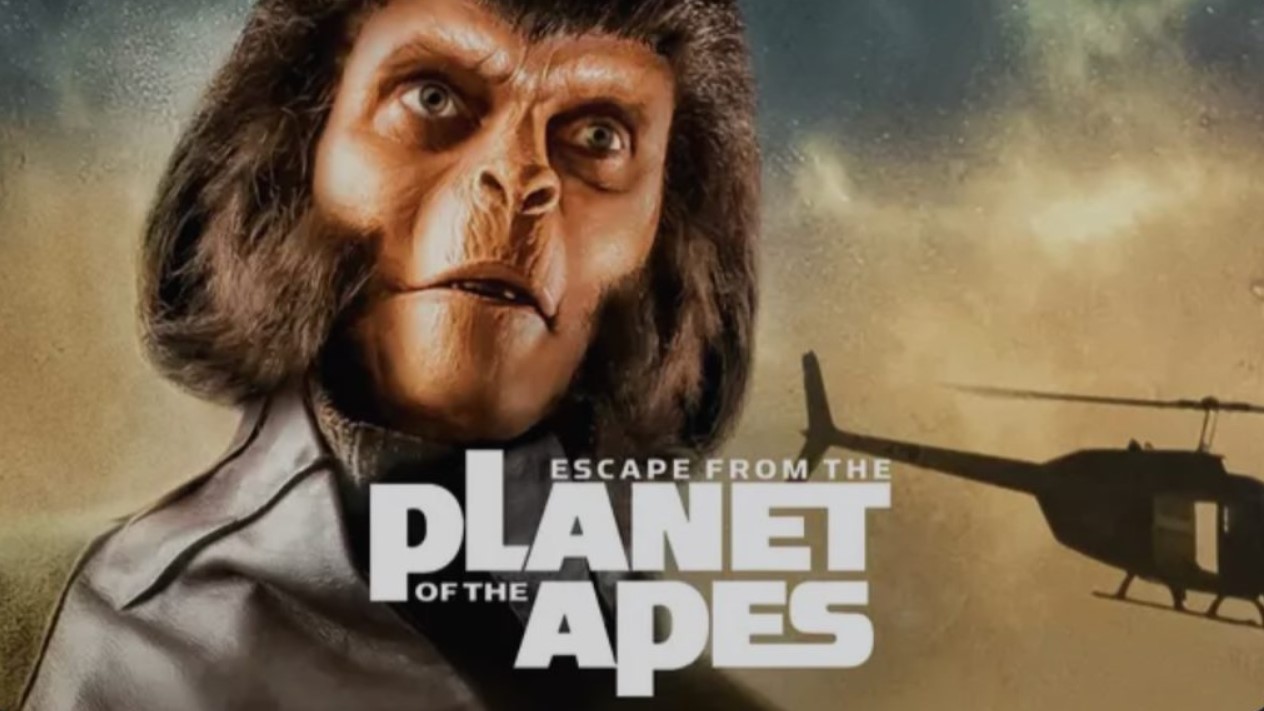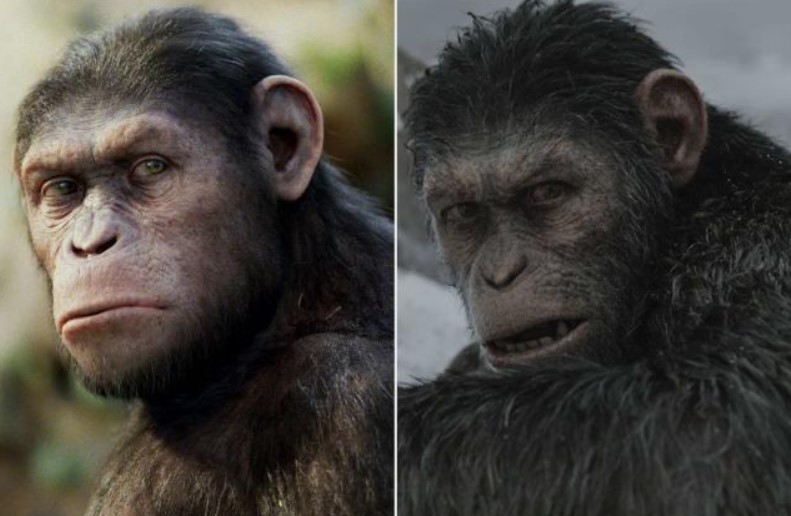The Planet of the Apes saga has enthralled audiences with its gripping narrative and impressive science-fiction elements since the release of the first film in 1968. The series has since grown to include nine movies, two television series, and various comics and novels, leading many fans to wonder about the optimal order for viewing these varied installments. The original five films – “Planet of the Apes”, “Beneath the Planet of the Apes”, “Escape from the Planet of the Apes”, “Conquest of the Planet of the Apes”, and “Battle for the Planet of the Apes” – should ideally be watched in their release order. Next, you could move on to the Tim Burton’s reboot “Planet of the Apes” (2001) and then the recent trilogy – “Rise of the Planet of the Apes”, “Dawn of the Planet of the Apes”, and “War for the Planet of the Apes”.
In terms of obtaining these films for viewing, it’s important to note the numerous legitimate options available. Many popular streaming platforms like Netflix, Amazon Prime, and Hulu often have some, if not all, of the films available for viewing with a subscription. Additionally, platforms such as YouTube, Google Play, and iTunes offer rental or purchasing options for these films, providing another route to satisfy your ape saga cravings. Cable and satellite TV subscribers can also check if any of the movies are available on-demand or scheduled for broadcast. For those who prefer physical media, the entire series is available on DVD and Blu-Ray, which can be purchased from various retailers or borrowed from local libraries. Always remember to support the creators of these fantastic films by using these sanctioned viewing methods.
For the more avid fans who wish to dive deeper into the lore of the Planet of the Apes, the two television series – “Planet of the Apes” (1974) and “Return to the Planet of the Apes” (animated, 1975) – offer additional narrative content. These series can be found on DVD or through specialty streaming services dedicated to retro television shows. Further, the numerous comics and novels that have been published over the years provide a wealth of story expansions and character backstories, available in both physical and digital formats through book retailers and online platforms like Comixology.
Ultimately, the Planet of the Apes saga offers a rich world to explore, filled with social commentary, engaging narratives, and memorable characters. Whether you’re a long-time fan revisiting the saga or a newcomer intrigued by its premise, there are plenty of legal and convenient options to view the films and supplementary materials. This ensures that you can fully immerse yourself in the dystopian world of the apes, knowing that you’re supporting the creators and rights holders who have made this captivating saga possible.

Chronological Order for Planet of the Apes Films
The Planet of the Apes franchise is a popular series that has spanned decades, with its initial debut in 1968 and its latest film released in 2017. It is a complex saga with a narrative that isn’t linear, making the chronological order of the movies somewhat confusing for viewers. In terms of the storyline’s chronological order, the newest trilogy (Rise of the Planet of the Apes, Dawn of the Planet of the Apes, and War for the Planet of the Apes) comes first.
These films, released between 2011 and 2017, act as a prequel to the original series, explaining how the apes gained intelligence and began their rise to power. Following these films, in the narrative timeline, is the original Planet of the Apes movie from 1968, where humans crash-land on a planet ruled by apes, not realizing it’s Earth in the future. The subsequent sequels (Beneath the Planet of the Apes, Escape from the Planet of the Apes, Conquest of the Planet of the Apes, and Battle for the Planet of the Apes) further explore this dystopian future.
The 2001 Planet of the Apes film directed by Tim Burton is a standalone remake of the original 1968 movie and does not fit within the chronological order of the other films. Understanding the sequence of these films enhances the viewing experience, providing a comprehensive picture of the iconic Planet of the Apes narrative.
Recommended Reading Order for Percy Jackson and The Olympians
For fans of Rick Riordan’s exhilarating mythological universe, particularly the Percy Jackson and The Olympians series, having an optimal reading order can enhance the narrative flow and overall enjoyment. The most advisable order to delve into the world of Percy Jackson starts with the original five-book series, beginning with “Percy Jackson & The Olympians: The Lightning Thief”, followed by “The Sea of Monsters”, “The Titan’s Curse”, “The Battle of the Labyrinth”, and “The Last Olympian”.
These books lay out the foundation of the story, introducing characters, developing plotlines, and setting the stage for subsequent adventures in the same universe. After completing the original series, readers can proceed to the supplementary books that further elaborate on the world of Percy Jackson. These include “The Demigod Files” and “Percy Jackson’s Greek Gods”. Following this, one can embark on reading “The Heroes of Olympus” series which is a direct sequel to the original series. The reading order for this series starts with “The Lost Hero”, then “The Son of Neptune”, “The Mark of Athena”, “The House of Hades”, and finally “The Blood of Olympus”. The final step in the recommended reading order is the “The Trials of Apollo” series which follows after “The Heroes of Olympus”.
While it is not obligatory to follow this order, it certainly provides a methodical approach to understanding and appreciating the layered intricacies of the universe that Riordan has meticulously crafted. This suggested sequence ensures readers don’t miss out on any plot developments, character arcs, and hidden connections that they might otherwise overlook if the books are read out of order.

Planet of the Apes Movies: Release Sequence
The Planet of the Apes movie series, a science-fiction franchise that explores themes of civilization, evolution, and humanity through the prism of simian societies, has a unique release sequence that doesn’t follow the chronology of the plot. The original film, “Planet of the Apes,” was released in 1968, which was followed by four sequels released annually from 1970 to 1973: “Beneath the Planet of the Apes,” “Escape from the Planet of the Apes,” “Conquest of the Planet of the Apes,” and “Battle for the Planet of the Apes,” respectively.
However, these sequels do not follow a linear narrative. The second film, “Beneath the Planet of the Apes,” is a direct continuation of the first movie. But the third movie, “Escape from the Planet of the Apes,” ventures into time-travel, taking two intelligent apes back to the modern human era. The fourth movie, “Conquest of the Planet of the Apes,” is positioned as a prequel to the original, illustrating the rise of the ape civilization. The fifth film, “Battle for the Planet of the Apes,” portrays the war between humans and apes, serving as a bridge between the fourth film and the original.
The franchise was rebooted in 2001 with Tim Burton’s “Planet of the Apes,” a reimagining of the original film. Another reboot series started in 2011 with “Rise of the Planet of the Apes,” which set off a new trilogy that also includes “Dawn of the Planet of the Apes” (2014) and “War for the Planet of the Apes” (2017). This trilogy delineates a new origin story for the ape civilization and its struggle against humans. So, while the release sequence of the movies may seem straightforward, the narrative sequence is a complex mix of sequels, prequels, and reboots.
Accessing the Planet of the Apes Films: Viewing Options
Accessing the Planet of the Apes films offers a variety of viewing options for movie enthusiasts worldwide. These sci-fi classics are available across multiple platforms to cater to different audience preferences. One of the most common methods is through physical copies like DVDs and Blu-ray discs. These are typically available in movie shops or can be ordered online from retailers like Amazon. They sometimes come as a collection, making it easy to watch the entire series in chronological order.
Online streaming platforms also offer another convenient way to access the Planet of the Apes films. Prominent streaming services like Netflix, Hulu, and Amazon Prime Video often carry these films in their libraries. However, it’s essential to note that availability can vary depending on your geographical location due to regional restrictions. For those who prefer digital copies, platforms like Google Play Movies, iTunes, and Amazon Video provide the option to rent or buy the movies. This allows viewers to have a digital copy of the film on their devices, ready to watch at any time.
Cable and satellite TV are yet another option. Movie channels frequently feature the Planet of the Apes films as part of their programming. This traditional method may not offer the same convenience as on-demand streaming or digital copies but can be a viable choice for those who prefer scheduled viewing.
Lastly, the Planet of the Apes films are occasionally screened in theaters or film festivals, particularly during anniversaries or special events. This offers a unique viewing experience, especially for fans wanting to catch the films on the big screen. Whichever method you choose, accessing the Planet of the Apes films has never been easier thanks to the wide range of viewing options available today.
